Papers by Fabrizio Giorgini
Content and concept-based retrieval and navigation tools in Sculpteur
Multikonferenz Wirtschaftsinformatik 2010, 2010
Measuring and Visualizing Learning in the Information-Rich Classroom, 2015

The first session will describe the processes, tools and techniques that are used for digitising,... more The first session will describe the processes, tools and techniques that are used for digitising, cataloguing, searching, and accessing multimedia representations of works of art in a range of cultural heritage institutions from across Europe. Particular attention will be made to 3D content acquisition, advanced searching methodologies, and the use of digital content in eLearning applications. Practical issues such as fit with infrastructure (people, processes, culture, systems) and ease of use (training, deployment and operation) will also be discussed. The second session will present practical guidelines on how to use cultural heritage ontologies (specifically the CIDOC CRM) to structure, integrate and improve access to multimedia museum and gallery information. We will present both the challenges and benefits of using the CIDOC CRM and Semantic Web techniques to improve the understandability and navigation of large digital collections. We will discuss how mapping museum and galle...
We discuss a system for the digital capture of museum artefacts which are accumulated into a mult... more We discuss a system for the digital capture of museum artefacts which are accumulated into a multimedia repository comprising 3D models, images, video and sound clips as well as textual descriptions. A comprehensive set of metadata is recorded and stored alongside these various media with the aim of re- using and re-purposing them for multiple applications. We investigate issues relating to both internal and external interoperability to enable the creation of learning scenarios within the system itself as well as the export of primary multimedia objects into an independent, external Learning Content Management System for the creation of complex Learning Objects.
Applications and Science of Neural Networks, Fuzzy Systems, and Evolutionary Computation, 1998
ABSTRACT
Proceedings 10th International Conference on Image Analysis and Processing
This chapter revisits the original goals and objectives for NEXT-TELL. We do so in order to provi... more This chapter revisits the original goals and objectives for NEXT-TELL. We do so in order to provide a basis for the reader in terms of measurable outcomes that can be evaluated later in this deliverable.
SPIE Proceedings, 2001
ABSTRACT
Proceedings of Computer Graphics International Conference, CGI, 2004
A complete tool chain starting with stereo photogrammetry based digitization of artifacts, their ... more A complete tool chain starting with stereo photogrammetry based digitization of artifacts, their refinement, collection and management with other multimedia data, and visualization using virtual and augmented reality is presented. Our system provides a one-stop-solution for museums to create, manage and present both content and context for virtual exhibitions. Interoperability and standards are also key features of our system allowing both small and large museums to select components and build a bespoke system suited to their needs. For example, museums can build a tool set focused on the whole solution or just the visualization.
Lecture Notes in Computer Science, 2006
The poster introduces PROLIX, an integrated project funded by the European Commission. PROLIX ove... more The poster introduces PROLIX, an integrated project funded by the European Commission. PROLIX overall objective is to align learning with business processes in order to enable organisations to faster improve the competencies of their employees according to ...
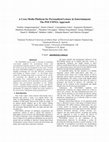
2006 Second International Conference on Automated Production of Cross Media Content for Multi-Channel Distribution (AXMEDIS'06), 2006
The POLYMNIA project aims to develop an intelligent cross-media platform for personalised leisure... more The POLYMNIA project aims to develop an intelligent cross-media platform for personalised leisure and entertainment in thematic parks or venues. The system allows the visitors to be the real protagonist in the venue. Towards this goal, POLYMNIA platform is equipped with innovative imaging technologies for real time detection, localisation and tracking of "human content", i.e., the human visitor within the recoding being made in real-time by the system. No constraints are imposed on the variation of the environment. New, content-based media representation and organisation schemes will be developed to provide scalable, efficient and user-oriented description of the "human content", enabling efficient retrieval, access, and delivery across heterogeneous media platforms. In addition, adaptive mechanisms are employed to update the system response to the current users' information needs and preferences.
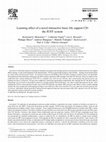
Resuscitation, 2004
Introduction: Electronic interactive learning environments can enhance the learning experience an... more Introduction: Electronic interactive learning environments can enhance the learning experience and may prove beneficial in basic life support (BLS) training. As part of the European Union funded project "JUST-in-time health emergency interventions-training of non-professionals by virtual reality and advanced IT tools", an innovative interactive CD-ROM on BLS and other emergency medicine topics was developed. We hypothesised that individuals without previous BLS training could learn CPR techniques from this CD. Methods: Sixty-two students were randomised into a group studying the JUST CD in a computer class room for up to 60 min, and a control group who did not receive any training (serving as a reference). CD users also completed a satisfaction questionnaire immediately after studying the CD. The BLS skills of both groups were assessed in a mock BLS scenario on a training manikin. BLS performance was video recorded and analysed. Results: After studying the CD for a mean period of 42 min, users of the CD had better assessment skills and were more likely to show a positive helping attitude, but chest compression and breathing techniques were ineffective. Most users rated the CD as very good and a positive learning tool. Conclusion: Individuals without prior BLS training showed improved behaviour and assessment skills after exposure to the CD, but motor skill acquisition requires alternative learning strategies.
The Sculpteur project provides an environment for intelligent retrieval and indexing of multimedi... more The Sculpteur project provides an environment for intelligent retrieval and indexing of multimedia objects related to cultural collections stored in a set of networked databases. The paper gives an overview of the Sculpteur system and illustrates how the ontology developed in Sculpteur describing the application domains of the galleries and museums involved in the project, coupled to the content based analysis can be used to navigate the collections and enhance the content based retrieval.
Lecture Notes in Computer Science, 2004
The paper describes the prototype design and development of a multimedia system for museums and g... more The paper describes the prototype design and development of a multimedia system for museums and galleries. Key elements in the system are the introduction of 3-D models of museum artefacts together with 3-D as well as 2-D content based retrieval and navigation facilities and the development of a semantic layer, centred on an ontology for museums, which aims to expose the richness of knowledge associated with the museum collections and facilitate concept based retrieval and navigation integrated with that based on content and metadata. Interoperability protocols are designed to allow external applications to access the collection and an example is given of an e-Learning facility which uses models extracted to a virtual museum.

Museums and galleries are becoming increasing rich in digital information. This is often created ... more Museums and galleries are becoming increasing rich in digital information. This is often created for internal activities such as cataloguing, curation, conservation and restoration, but also has many additional uses including gallery terminals, Web access, educational, scientific, and commercial licensing. New forms of multimedia content such as 3D models and virtual spaces have huge potential for enhancing the way people interact with museum collections; for example, in structured eLearning environments. Despite drivers for increased integration of information sources within the museum or gallery, and for improved Web accessibility for external users, this content is often hard to access and is held in multiple internal systems with non-standard schemas and descriptions. Providing information to external users or applications in a structured and machine-readable form is particularly difficult due to a lack of tools and standards. This makes it difficult to expose this rich source o...
SCULPTEUR is an EU/IST funded collaborative research project concerned with the application of kn... more SCULPTEUR is an EU/IST funded collaborative research project concerned with the application of knowledge and semantic web technologies to the problem of multimedia information management in the cultural heritage domain. An important aspect of the project is the development of a semantic layer centred on an ontological representation of the domain which facilitates novel concept based retrieval, browsing and navigation as well as more traditional content and metadata based modes. Implications of extending the media collection to include 3-D models is also being addressed. The paper presents a brief progress report on the project.
Over the last three years, the European Commission supported IST SCULPTEUR project (http://www.sc... more Over the last three years, the European Commission supported IST SCULPTEUR project (http://www.sculpteurweb.org) has developed novel ways to create, search, navigate, access, share, repurpose and use museum and gallery multimedia content over the Web. This paper will review the achievements of the project as a whole, as well as the challenges we faced in the process. We pay particular attention to the more recent developments of the project, including: new graphical approaches for exploring rich cultural heritage information spaces; integration into museum and gallery infrastructure; and advances in interoperability and delivery of multimedia content over the Web.
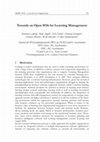
1 Motivation Looking at today's technologies that are used to build a learning environment re... more 1 Motivation Looking at today's technologies that are used to build a learning environment reveals a large variety of different software systems and components depending on the learning processes that organisations aim to support. Learning Management Systems (LMS) have established as the core systems in a modern learning environment (Kuechler et al. 2009; Grohmann et al. 2007. They integrate different technologies into a common learning infrastructure. However, given the myriad of learning applications, tools and technologies, organizations struggle to manage the interdependencies between software-supported activities within a modern learning environment. Software products for activities as diverse as learning need analysis, learning design, content authoring, learning itself as well as learning assessment interdependent both conceptually and technically. In addition, the integration of learning software with HR management systems (in corporations) or campus management systems (...





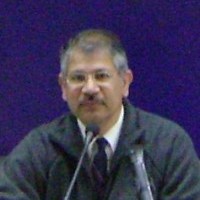
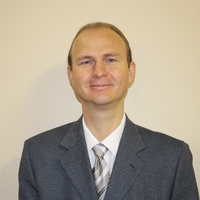
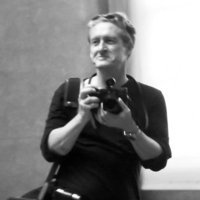


Uploads
Papers by Fabrizio Giorgini